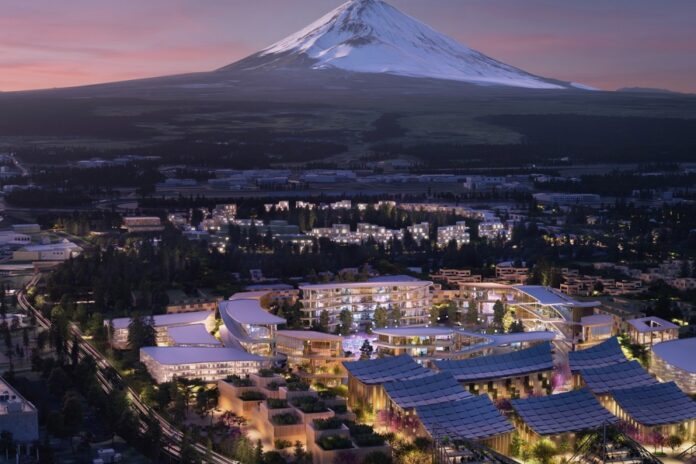At CES, Toyota has revealed plans to build a prototype futuristic city on a 175-acre site at the base of Mount Fuji in Japan.
Pitched as a “living laboratory,” Woven City will be home to full-time residents and researchers who will test and develop technologies such as autonomous vehicles, robotics, personal mobility, smart homes and artificial intelligence (AI).
“Building a complete city from the ground up, even on a small scale like this, is a unique opportunity to develop future technologies, including a digital operating system for the city’s infrastructure,” said Akio Toyoda, President, Toyota Motor Corporation, announcing the initiative at the CES tech trade show in Las Vegas. “With people, buildings and vehicles all connected and communicating with each other through data and sensors, we will be able to test connected AI technology in both the virtual and the physical realms, maximising its potential.”
Initially, 2,000 people – mainly Toyota employees and their families, retired couples, retailers, visiting scientists and industry partners – will live in Woven City and this number will grow as the initiative develops.
Toyota is inviting commercial and academic partners as well as interested scientists and researchers from around the world to come and work on their own projects in the real-world incubator.
City design
Toyota has commissioned architecture firm Bjarke Ingels Group (BIG) to design Woven City. The team has worked on many high-profile projects, including the 2 World Trade Centre in New York, Lego House in Denmark, and Google’s Mountain View and London headquarters.
“A swarm of different technologies are beginning to radically change how we inhabit and navigate our cities,” said Bjarke Ingels, founder and creative director, BIG.
“Connected, autonomous, emission-free and shared mobility solutions are bound to unleash a world of opportunities for new forms of urban life. With the breadth of technologies and industries that we have been able to access and collaborate with from the Toyota ecosystem of companies, we believe we have a unique opportunity to explore new forms of urbanity with the Woven City that could pave new paths for other cities to explore.”
The masterplan of the city includes areas for faster vehicles only; streets for a mix of lower-speed, personal mobility and pedestrians; and a park-like promenade for pedestrians only. These three street types weave together to form an “organic grid pattern” which aims to help accelerate the testing of autonomous vehicles.
Sustainability
Buildings will be mostly made of wood to minimise the carbon footprint and will be built using traditional Japanese wood joinery, combined with robotic production methods. The rooftops will be covered in photo-voltaic panels to generate solar power in addition to power generated by hydrogen fuel cells. Toyota plans to bring the outdoors in throughout the city, with native vegetation and hydroponics.
Houses are set to be equipped with technologies such as in-home robotics and sensor-based AI to check occupants’ health.
Only fully autonomous, zero-emission vehicles will be allowed on the main thoroughfares, while autonomous Toyota ’e-Palettes’ will deliver and transport goods.
There will be neighbourhood parks and a large central park, as well as a central plaza for social gatherings.
The site development will begin in early 2021.



